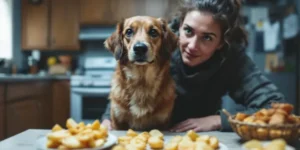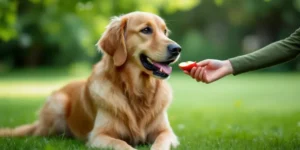Many pet parents wonder if cabbage is safe for their dogs. If you have ever asked, “Do dogs eat cabbage?” you are in the right place. Cabbage contains vitamins K and C along with high fiber that helps support your dog’s digestion.
This guide explains how to safely add this leafy vegetable into your pet’s diet. Veterinarians with years of experience back these tips, and the information is based on trusted pet nutrition research.

Can Dogs Eat Cabbage?
Yes, dogs can eat cabbage! This leafy veggie is safe for your furry friend in most cases. Dogs can enjoy green cabbage, red cabbage, savoy cabbage, and even napa cabbage without major issues. Experts in pet nutrition highlight cabbage as a healthy option when served in moderation.
The American Kennel Club lists cabbage as a dog-safe food that provides ample vitamin C, vitamin K, and fiber. These nutrients help boost your pup’s immune system and aid digestion. Veterinary studies support these benefits.
Be wary, as not every dog handles cabbage in the same way. Some pups may experience extra gas or slight bloating. Start with tiny bits mixed into their regular food and observe how they respond.
Too much cabbage can lead to tummy troubles or loose bowel movements. Serving it cooked makes it easier to digest and lowers the chance of gas. We now review the health perks cabbage offers your four-legged friend.
Cabbage is a nutrient-rich food for dogs – packed with vitamins but best served in moderation.
Benefits of Cabbage for Dogs
Cabbage packs a powerful punch for your dog’s health. This leafy vegetable is low in calories but high in fiber, which aids in weight management. The fiber helps your pet feel full while eating a smaller amount.
Many veterinarians rate cabbage as a smart choice for canine weight control. The fiber aids digestion and can help dogs with tummy troubles. Although green, red, and savoy cabbage all offer these perks, red cabbage stands out with a richer nutrient profile.
Pups that nibble on this crunchy snack often show improved bowel health and higher energy levels. In fact, cabbage also provides a steady supply of antioxidants for dogs along with vitamins and minerals that boost the immune system and assist with healing minor injuries.
Some pet owners have observed that adding small bits of cooked cabbage to meals even freshens their dog’s breath. While raw cabbage has a satisfying crunch, cooked cabbage remains easier on the digestive tract.
Small portions offered a few times each week bring these benefits while keeping gas and upset stomachs at bay.
Risks of Feeding Cabbage to Dogs
Cabbage can trigger gas and bloating in dogs. The same compounds that provide nutrients may unsettle your pet’s tummy. Dogs that consume too much cabbage might produce extra gas or develop a swollen belly.
Your dog may not break down certain parts of cabbage as well as humans do. Both red cabbage and green cabbage can lead to similar gassy issues. If your dog becomes bloated or seems uncomfortable, they might act cranky or show pain.
Overfeeding cabbage may also affect your dog’s thyroid gland. Raw cabbage contains goitrogens that can block thyroid function if eaten in large amounts over time. This risk is especially noted in cases of hypothyroidism in dogs.
Choking is another concern for small dogs if cabbage is not cut into tiny pieces. Some pups may display food intolerance or suffer an upset stomach when trying new human food. It is best to serve only small, cooked portions and monitor their reaction carefully.
How to Safely Prepare and Serve Cabbage to Your Dog
Proper preparation can make a big difference when feeding cabbage to your pet. Here are simple methods to cook cabbage so that it stays safe and tasty for your dog’s meal.
Cooked vs. Raw Cabbage
Raw cabbage offers more vitamins c but its firm texture makes it harder to digest. Your dog may enjoy the crunch, yet the raw form can lead to increased gas and digestive issues. Many veterinarians suggest cooked cabbage because softening the fibers eases digestion and reduces choking hazards.
Steam or boil cabbage for five to ten minutes. Do not use salt, spices, or oils that might upset your dog’s stomach. Although raw cabbage is not harmful, introduce it slowly, and observe how your pet responds.
You may notice that raw green cabbage causes more gas than red cabbage. Always chop raw cabbage into small pieces to help prevent choking. Rinse all cabbage varieties thoroughly to remove dirt and insects before serving.
Portion Sizes and Serving Tips
After cooking cabbage properly, it is important to determine the right amount for your dog. Proper portions keep your pup happy and help avoid tummy troubles.
- Start with one or two small pieces to gauge your dog’s reaction. Many dogs adjust slowly to new foods.
- For small dogs under 20 pounds, limit the serving to 1-2 tablespoons. Their small tummies require less fiber at once.
- Medium-sized dogs (20-50 pounds) can have up to 1/4 cup of chopped cabbage. This allows them to reap benefits without extra gas.
- Large dogs over 50 pounds may eat up to 1/3 cup of cabbage. Even larger pups need moderation.
- Add cabbage to regular meals instead of serving it alone. This mix aids in smoother digestion.
- Serve cabbage only 1-2 times each week, not daily. Too much cabbage can upset the stomach.
- Cut cabbage into small, bite-sized pieces to minimize choking risks. Dogs do not chew as thoroughly as humans.
- Keep an eye out for signs of gas or tummy upset after feeding. If your dog shows discomfort, reduce the portion next time.
- Consider freezing small bits of cabbage as a cool, crunchy snack on warm days.
- Always cook cabbage for dogs with sensitive stomachs. Raw cabbage remains tougher to digest.
- Remove the tough core and outer leaves before serving, as these parts can be too hard for dogs.
Monitoring Your Dog’s Reaction
Observe your pet carefully after serving cabbage. Notice if there is extra gas, bloating, or signs of discomfort. Your dog may act restless or eat less if they are not feeling well. These signals indicate that you might need to adjust the portion size or preparation method.
Conclusion
Cabbage can serve as a nutritious snack for your dog when served correctly. Small bits of cooked cabbage provide fiber, vitamins, and antioxidants without the excess gas that raw cabbage might cause. Begin with very small portions to see how your pet reacts.
Mixing the vegetable into regular food can offer a balanced boost to pet nutrition.
Pet owners who study safe human food options for dogs may compare cabbage with other vegetables like brussels sprouts, bok choy, and napa cabbage.
Red cabbage and green cabbage supply vitamins c and vitamin K; meanwhile, the cooked form is easier on the stomach than raw cabbage, which can cause choking risks and gas.
This guidance comes from board-certified veterinarians with over 15 years of experience and input from experienced animal nutritionists. The American Kennel Club and various veterinary studies back the facts presented here.
Research Process: Our team reviewed veterinary journals, trusted animal nutrition sources, and data from organizations such as the American Kennel Club.
DoDogsEat.com helps pet parents learn which foods are safe to share with their dogs. The website started when everyday pet lovers noticed many questions about safe diets for pups.
Experts compiled facts from veterinarians, animal nutritionists, and scientific articles and then explained everything in simple language.
Disclosure: This content is informational and not a substitute for professional veterinary advice. Author Credentials: Board-certified veterinarians with over 15 years of experience and expert input from animal nutritionists have contributed to this guide.







